Affiliate links on Android Authority may earn us a commission. Learn more.
Google Pixel 8 vs Pixel 8 Pro: What's the difference and which should you buy?
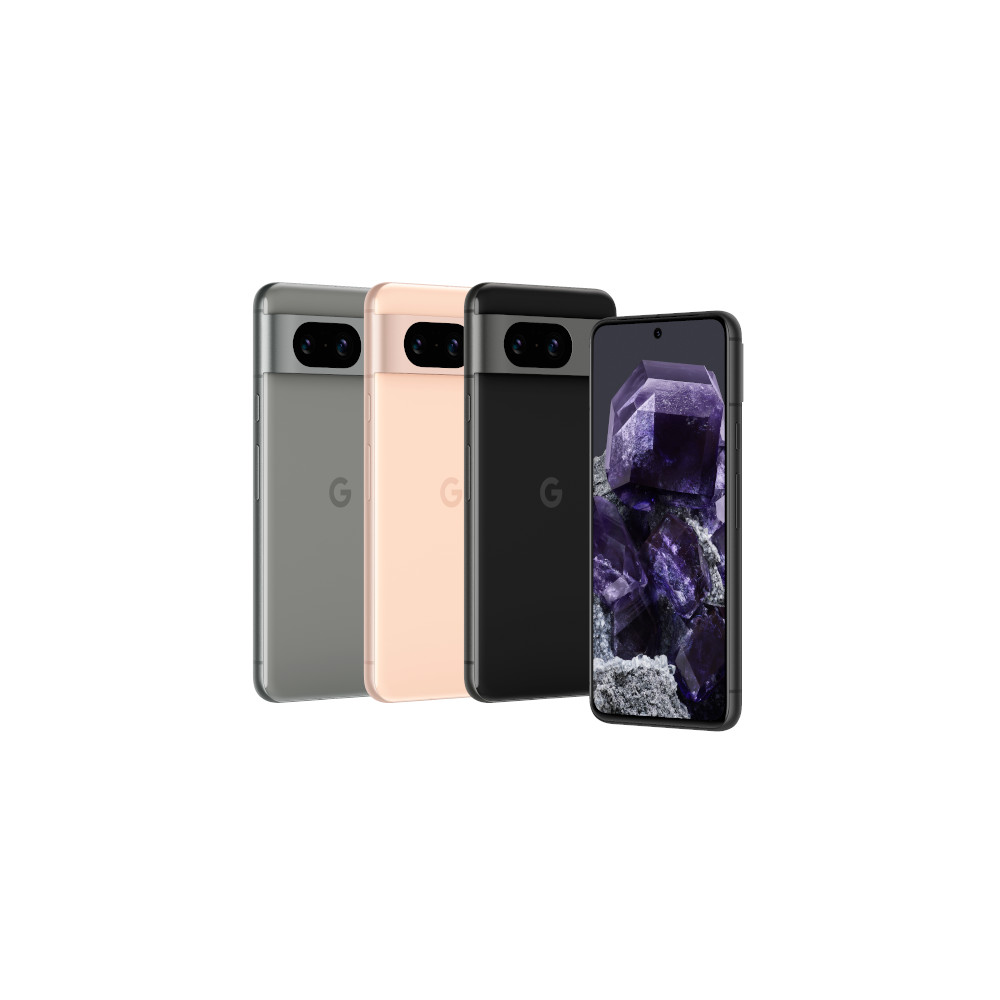



Google only releases a handful of phones every year, making their flagship Android phones all the more special. The Pixel 8 and Pixel 8 Pro represent the best combination of hardware and software specifications that Google can ship in a conventional glass-slab smartphone form factor. But what is the difference between the regular Pixel 8 and the Pixel 8 Pro? Are there meaningful reasons to prefer one over the other? Let’s explore these questions in this comparison of Pixel 8 vs Pixel 8 Pro!
Google Pixel 8 vs Pixel 8 Pro: At a glance
- The Pixel 8 Pro is larger, heavier, and has a bigger battery than the Pixel 8.
- The Pixel 8 Pro has a larger and better display than the Pixel 8.
- The Pixel 8 Pro has more RAM and more storage options than the Pixel 8.
- The Pixel 8 Pro has a better ultrawide camera, a dedicated telephoto camera, and manual controls in the camera app. The Pixel 8 misses out on all of these.
- The Pixel 8 Pro has a temperature sensor, UWB tech, and Gemini Nano support, which the Pixel 8 does not have.
- The Pixel 8 is cheaper than the Pixel 8 Pro.
Google Pixel 8 vs Pixel 8 Pro: Specs
| Google Pixel 8 | Google Pixel 8 Pro | |
|---|---|---|
Display | Google Pixel 8 6.2-inch OLED 2,400 x 1,080 resolution 428ppi 20:9 aspect ratio 60-120Hz refresh rate 1,400 nits brightness (HDR) 2,000 nits brightness (peak) HDR support Gorilla Glass Victus | Google Pixel 8 Pro 6.7-inch LTPO OLED 2,992 x 1,344 resolution 489ppi 20:9 aspect ratio 1-120Hz refresh rate 1,600 nits brightness (HDR) 2,400 nits brightness (peak) HDR support Gorilla Glass Victus 2 |
Processor | Google Pixel 8 Google Tensor G3 | Google Pixel 8 Pro Google Tensor G3 |
RAM | Google Pixel 8 8GB LPDDR5X | Google Pixel 8 Pro 12GB LPDDR5X |
Storage | Google Pixel 8 128 or 256GB UFS 3.1 | Google Pixel 8 Pro US: - 128, 256, or 512GB, or 1TB - UFS 3.1 Outside US: - 128, 256, or 512GB - UFS 3.1 |
Power | Google Pixel 8 4,575mAh (typical) 27W wired charging (USB-PD 3.0 PPS) Qi wireless charging | Google Pixel 8 Pro 5,050mAh (typical) 30W wired charging (USB-PD 3.0 PPS) Qi wireless charging |
Cameras | Google Pixel 8 Rear: - 50MP wide (1.2μm pixel width, ƒ/1.68 aperture, 82-degree FoV, 1/1.31-inch sensor, AF, OIS, EIS) - 12MP ultrawide (1.25μm pixel width, ƒ/2.2 aperture, 125.8-degree FoV, AF) - Single-zone laser-detect auto-focus (LDAF) sensor Front: - 10.5MP (1.22μm pixel width, ƒ/2.2 aperture, 95-degree FoV, FF) Camera app does not have pro controls | Google Pixel 8 Pro Rear: - 50MP wide (1.2μm pixel width, ƒ/1.68 aperture, 82-degree FoV, 1/1.31-inch sensor, AF, OIS, EIS) - 48MP ultrawide (0.8μm pixel width, ƒ/1.95 aperture, 125.5-degree FoV, AF) - 48MP telephoto (0.7μm pixel width, ƒ/2.8 aperture, 21.8-degree FoV, 5x optical zoom, OIS, EIS) - Multi-zone laser-detect auto-focus (LDAF) sensor Front: - 10.5MP (1.22μm pixel width, ƒ/2.2 aperture, 95-degree FoV, AF) Camera app has pro controls |
Dimensions and weight | Google Pixel 8 150.5 x 70.8 x 8.9mm 187g | Google Pixel 8 Pro 162.6 x 76.5 x 8.8mm 213g |
Hardware extras | Google Pixel 8 N/A | Google Pixel 8 Pro Temperature sensor |
Video | Google Pixel 8 Rear: 4K (24, 30, or 60fps) 1080p (24, 30, or 60fps) Front: 4K (24, 30, or 60fps) Supports: Macro Focus Video, 10-bit HDR, Cinematic Blur/Pan, Slo-Mo up to 240fps, 4K timelapse, Astrophotography timelapse, OIS, digital zoom up to 7x, HEVC (H.265), AVC (H.264) | Google Pixel 8 Pro Rear: 4K (24, 30, or 60fps) 1080p (24, 30, or 60fps) Front: 4K (24, 30, or 60fps) Supports: Video Boost, Night Sight Video, Macro Focus Video, 10-bit HDR, Cinematic Blur/Pan, Slo-Mo up to 240fps, 4K timelapse, Astrophotography timelapse, OIS, digital zoom up to 20x, HEVC (H.265), AVC (H.264) |
Audio | Google Pixel 8 Stereo speakers Triple-microphone Spatial audio support | Google Pixel 8 Pro Stereo speakers Triple-microphone Spatial audio support |
Ports | Google Pixel 8 USB-C 3.2 Dual-SIM (1x nano SIM and 1x eSIM) | Google Pixel 8 Pro USB-C 3.2 Dual-SIM (1x nano SIM and 1x eSIM) |
Security | Google Pixel 8 Titan M2 security chip Under-display fingerprint sensor Face Unlock (Class 3, highest tier) | Google Pixel 8 Pro Titan M2 security chip Under-display fingerprint sensor Face Unlock (Class 3, highest tier) |
Durability | Google Pixel 8 Gorilla Glass Victus (front and back) IP68 rating | Google Pixel 8 Pro Gorilla Glass Victus 2 (front and back) IP68 rating |
Connectivity | Google Pixel 8 US (PR), CA, UK, EU, AU: - Wi-Fi 7 (802.11be) with 2.4GHz, 5GHz, 6GHz - 2x2+2x2 MIMO - NFC - Bluetooth 5.3 JP: - Wi-Fi 6E (802.11ax) with 2.4GHz, 5GHz, 6GHz - 2x2+2x2 MIMO - NFC - Bluetooth 5.3 TW, SG, IN: - Wi-Fi 6 (802.11ax) with 2.4GHz, 5GHz - HE160 MIMO - NFC - Bluetooth 5.3 | Google Pixel 8 Pro US (PR), CA, UK, EU, AU: - Wi-Fi 7 (802.11be) with 2.4GHz, 5GHz, 6GHz - 2x2+2x2 MIMO - NFC - Bluetooth 5.3 - UWB JP: - Wi-Fi 6E (802.11ax) with 2.4GHz, 5GHz, 6GHz - 2x2+2x2 MIMO - NFC - Bluetooth 5.3 - UWB TW, SG, IN: - Wi-Fi 6 (802.11ax) with 2.4GHz, 5GHz - HE160 MIMO - NFC - Bluetooth 5.3 - UWB |
Network | Google Pixel 8 Model G9BQD (US and CA) - GSM/EDGE: Quad-band (850, 900, 1800, 1900MHz) - UMTS/HSPA+/HSDPA: Bands 1, 2, 4, 5, 6, 8, 19 - LTE: Bands B1 / 2 / 3 / 4 / 5/ 7 / 8 / 12 / 13 / 14 / 17 / 18 / 19 / 20 / 25 / 26 / 28 / 29 / 30 / 38 / 40 / 41 / 46 / 48 / 66 / 71 - 5G Sub-6: Bands n1 / 2 / 3 / 5 / 7 / 8 / 12 / 20 / 25 / 26 / 28 / 29 / 30 / 38 / 40 / 41 / 48 / 66 / 70 / 71 / 77 / 78 Model GKWS622 (US and CA): - GSM/EDGE: Quad-band (850, 900, 1800, 1900MHz) - UMTS/HSPA+/HSDPA: Bands 1, 2, 4, 5, 6, 8, 19 - LTE: Bands B1 / 2 / 3 / 4 / 5 / 7 / 8 / 12 / 13 / 14 / 17 / 18 / 19 / 20 / 25 / 26 / 28 / 29 / 30 / 38 / 40 / 41 / 46 / 48 / 66 / 71 - 5G Sub-6: Bands n1 / 2 / 3 / 5 / 7 / 8 / 12 / 20 / 25 / 26 / 28 / 29 / 30 / 38 / 40 / 41 / 48 / 66 / 70 / 71 / 77 / 78 - 5G mmWave: Bands n258 / 260 / 261 Model GZPFO (JP): - GSM/EDGE: Quad-band (850, 900, 1800, 1900MHz) - UMTS/HSPA+/HSDPA: Bands 1, 2, 4, 5, 6, 8, 19 - LTE: Bands B1 / 2 / 3 / 4 / 5 / 7 / 8 / 12 / 13 / 14 / 17 / 18 / 19 / 20 / 21 / 25 / 26 / 28 / 30 / 32 / 38 / 39 / 40 / 41 / 42 / 46 / 48 / 66 / 71 - 5G Sub-6: Bands n1 / 2 / 3 / 5 / 7 / 8 / 12 / 20 / 25 / 28 / 30 / 38 / 40 / 41 / 66 / 71 / 75 / 76 / 77 / 78 / 79 - FeliCa Model GPJ41 (All other countries): - GSM/EDGE: Quad-band (850, 900, 1800, 1900MHz) - UMTS/HSPA+/HSDPA: Bands 1, 2, 4, 5, 6, 8, 19 - LTE: Bands B1 / 2 / 3 / 4 / 5 / 7 / 8 / 12 / 13 / 14 / 17 / 18 / 19 / 20 / 25 / 26 / 28 / 30 / 32 / 38 / 40 / 41 / 42 / 46 / 48 / 66 / 71 - 5G Sub-6: Bands n1 / 2 / 3 / 5 / 7 / 8 / 12 / 20 / 25 / 26 / 28 / 30 / 38 / 40 / 41 / 66 / 71 / 75 / 76 / 77 / 78 | Google Pixel 8 Pro Model GC3VE (All countries except JP): - GSM/EDGE: Quad-band (850, 900, 1800, 1900MHz) - UMTS/HSPA+/HSDPA: Bands 1, 2, 4, 5, 6, 8, 19 - LTE: Bands B1 / 2 / 3 / 4 / 5 / 7 / 8 / 12 / 13 / 14 / 17 / 18 / 19 / 20 / 25 / 26 / 28 / 30 / 32 / 38 / 40 / 41 / 42 / 46 / 48 / 66 / 71 - 5G Sub-6: Bands n1 / 2 / 3 / 5 / 7 / 8 / 12 / 20 / 25 / 28 / 30 / 38 / 40 / 41 / 66 / 71 / 75 / 76 / 77 / 78 Model G1MNW (All countries except JP): - GSM/EDGE: Quad-band (850, 900, 1800, 1900MHz) - UMTS/HSPA+/HSDPA: Bands 1,2,4,5,6,8,19 - LTE: Bands B1 / 2 / 3 / 4 / 5 / 7 / 8 / 12 / 13 / 14 / 17 / 18 / 19 / 20 / 25 / 26 / 28 / 29 / 30 / 38 / 39 / 40 / 41 / 46 / 48 / 66 / 71 - 5G Sub-6: Bands n1 / 2 / 3 / 5 / 7 / 8 / 12 / 20 / 25 / 26 / 28 / 29 / 30 / 38 / 40 / 41 / 48 / 66 / 70 / 71 / 77 / 78 - 5G mmWave: Bands n257 / 258 / 260 / 261 Model GE9DP (JP): - GSM/EDGE: Quad-band (850, 900, 1800, 1900MHz) - UMTS/HSPA+/HSDPA: Bands 1, 2, 4, 5, 6, 8, 19 - LTE: Bands B1 / 2 / 3 / 4 / 5 / 7 / 8 / 12 / 13 / 14 / 17 / 18 / 19 / 20 / 21 / 25 / 26 / 28 / 30 / 38 / 39 / 40 / 41 / 42 / 48 / 66 / 71 - 5G Sub-6: Bands n1 / 2 / 3 / 5 / 7 / 8 / 12 / 20 / 25 / 28 / 30 / 38 / 40 / 41 / 66 / 71 / 77 / 78 / 79 - 5G mmWave: Bands n257 - FeliCa |
Software | Google Pixel 8 Android 14 7 years of OS upgrades 7 years of security patches 7 years of feature drops | Google Pixel 8 Pro Android 14 7 years of OS upgrades 7 years of security patches 7 years of feature drops |
Colors | Google Pixel 8 Obsidian (black), Hazel (blue-gray), Rose (pink) | Google Pixel 8 Pro Obsidian (black), Porcelain (white), Bay (blue) |
Warranty | Google Pixel 8 US, CA, JP, TW, IN, SG: - 1 year EU, UK, AU: - 2 years | Google Pixel 8 Pro US, CA, JP, TW, IN, SG: - 1 year EU, UK, AU: - 2 years |
In-box contents | Google Pixel 8 Google Pixel 8 1m USB-C to USB-C cable (USB 2.0 speed) Quick Switch adapter SIM tool Paperwork | Google Pixel 8 Pro Google Pixel 8 Pro 1m USB-C to USB-C cable (USB 2.0 speed) Quick Switch adapter SIM tool Paperwork |
The Pixel 8 and Pixel 8 Pro are two distinct smartphones with more differences than similarities.
Starting with the display, the Pixel 8 Pro has a larger and better display than the vanilla Pixel 8. The Pixel 8 gets a 6.2-inch OLED display with a 2,400 x 1,080 resolution and a refresh rate of up to 120Hz.
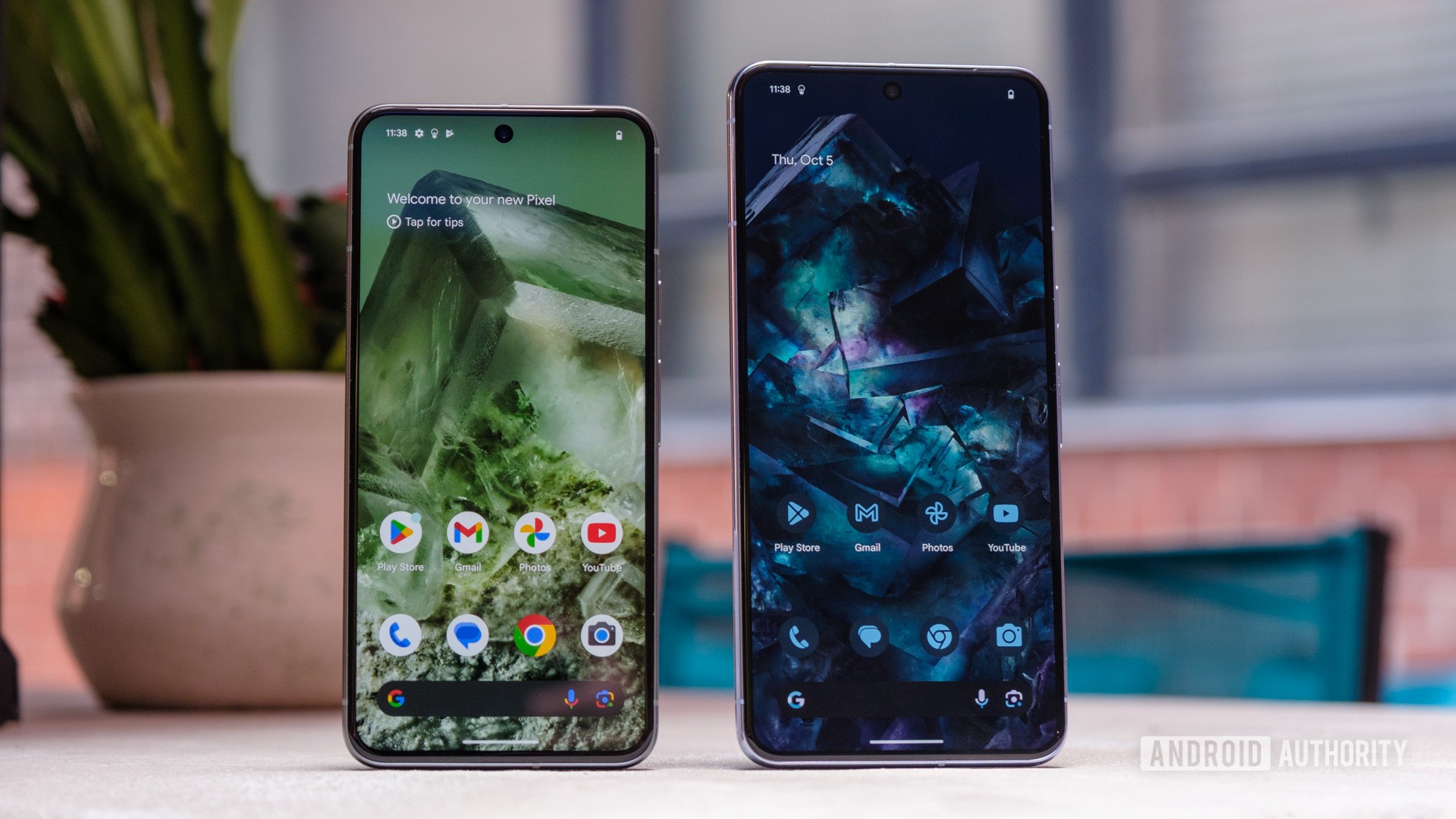
However, this is not an LTPO display, like the 6.7-inch OLED display with a 2,992 x 1,344 resolution on the Pixel 8 Pro. As a result, the Pixel 8 Pro can refresh variably between 1-120Hz, while the Pixel 8 can only do fixed steps of 60Hz and 120Hz. Surprisingly, both phones have a flat display.
The Pixel 8 Pro’s display is also brighter at 2,400 nits peak brightness, compared to the 2,000 nits peak brightness of the Pixel 8’s display. You also get Gorilla Glass Victus 2 on the front and back of the Pro, compared to the first-gen Gorilla Glass Victus on either side of the regular 8.
The Pixel 8 Pro gets a bigger, brighter, and better display, but the Pixel 8's display is no slouch either.
Both the phones are powered by the new Google Tensor G3 SoC. While you get 8GB LPDDR5X RAM on the Pixel 8, the Pro gets 12GB LPDDR5X RAM. The Pixel 8 comes in 128GB and 256GB UFS 3.1 storage variants, while the Pixel 8 Pro comes in 128GB, 256GB, 512GB, and 1TB UFS 3.1 storage variants.
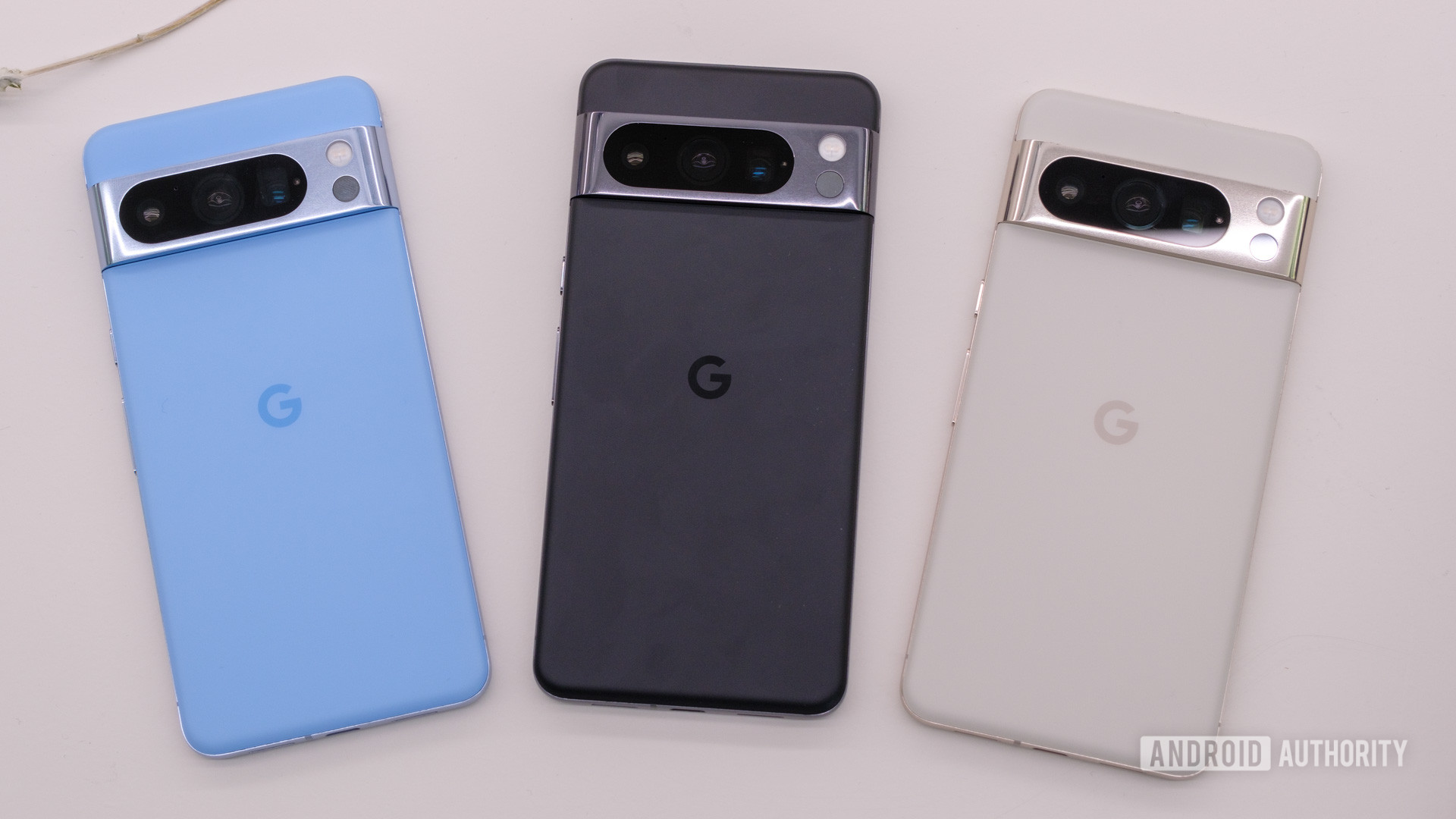
Two other notable differences are the presence of a temperature sensor and UWB tech on the Pixel 8 Pro. With the temperature sensor present on the rear near the cameras, the Pixel 8 Pro can measure the temperature of humans and other objects around you. The UWB tech enables precise location on the device. However, despite its presence on several Pixel devices so far, Google hasn’t used this tech much outside of remote unlocking some car models.
The Google Pixel 8 Pro is the only one of the two phones that supports Gemini Nano, Google’s mobile on-device AI model. This means that if you want access to more powerful, immediate AI features, you’ll need to opt for the pricier model.
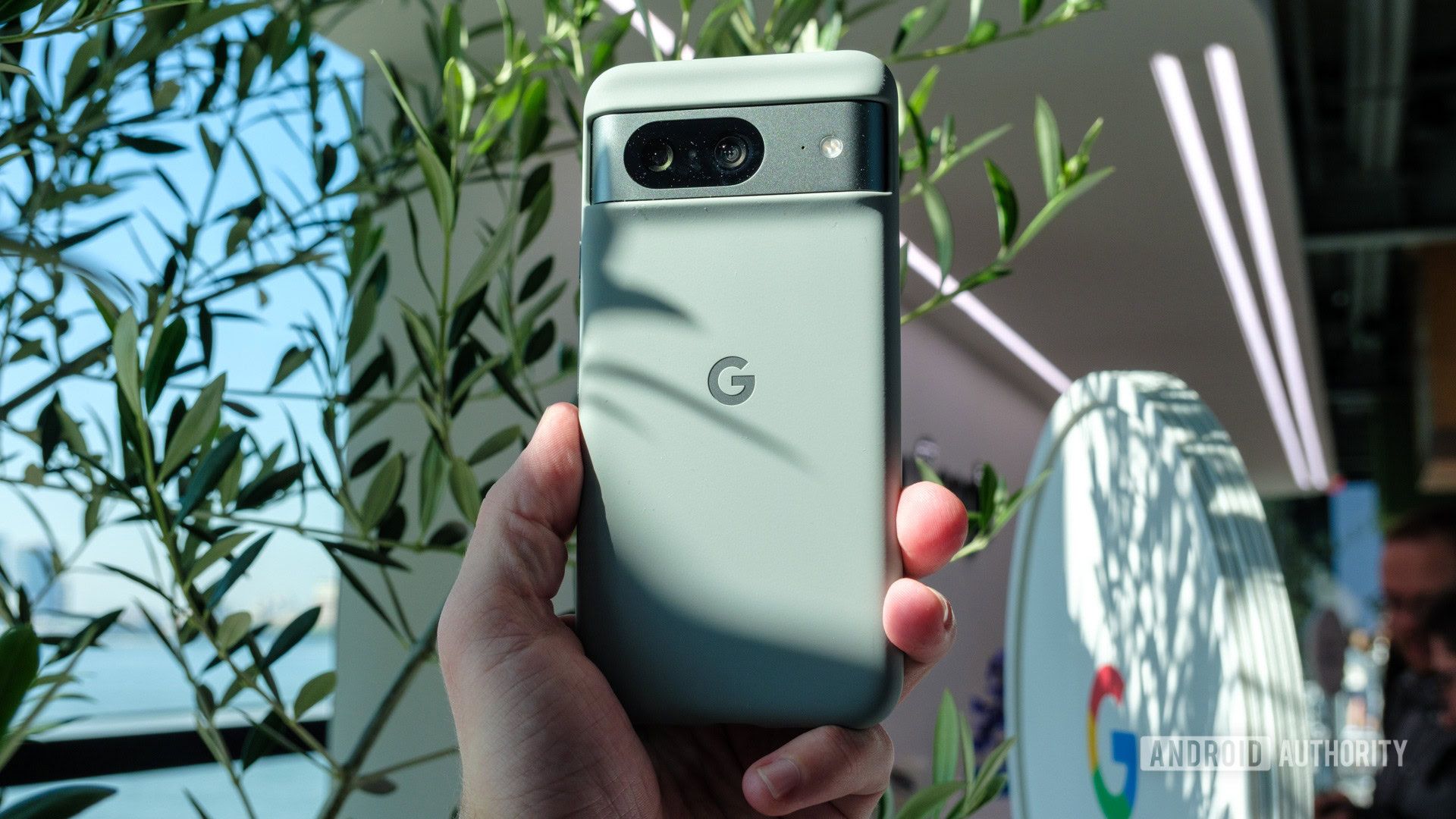
Both phones also come with an IP68 rating for water and dust resistance. However, the Pixel 8 is protected by Gorilla Glass Victus on the front and back, while the Pixel 8 Pro upgrades the spec to Gorilla Glass Victus 2 for the front and back glass.
Both phones feature the Titan M2 security chip and have under-display fingerprint sensors. They also support Class 3 Face Unlock, which enables authentication into apps and payments. Other common specs include Wi-Fi 7, Bluetooth 5.3, and NFC support. The USB-C port on both phones is also USB 3.2, unlike the situation in the iPhone 15 series.
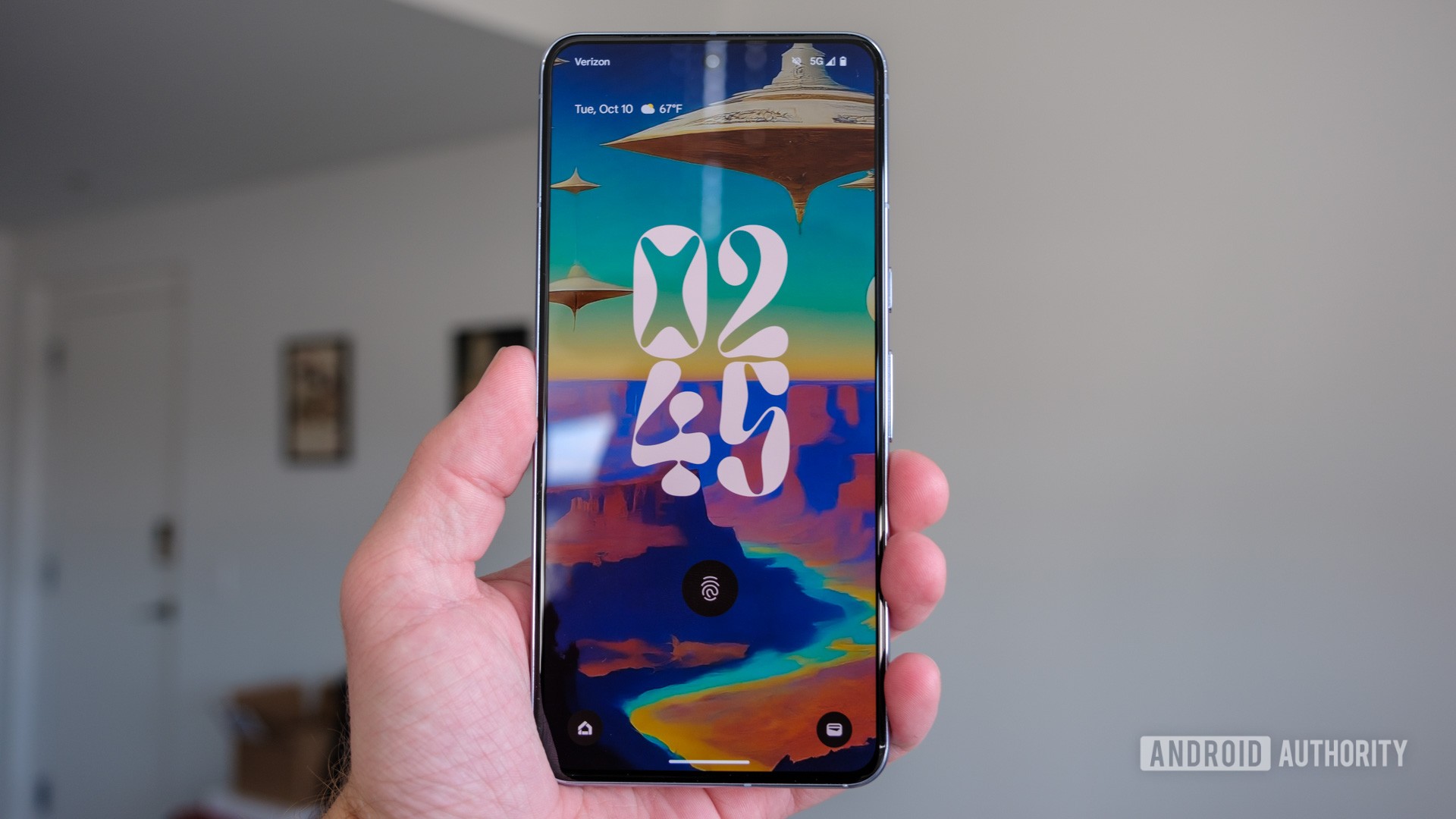
On the software side, Google is treating the phones at par with each other. The Pixel 8 and Pixel 8 Pro launch with Android 14 out of the box. Google also promises an unparalleled seven years of updates for the OS platform, Feature Drops, and security patches on both phones. Remember that some features that rely on hardware (like the temperature sensor or the UWB chip) are unlikely to be made available to the Pixel 8 through software updates.
Google Pixel 8 vs Pixel 8 Pro: Size comparison
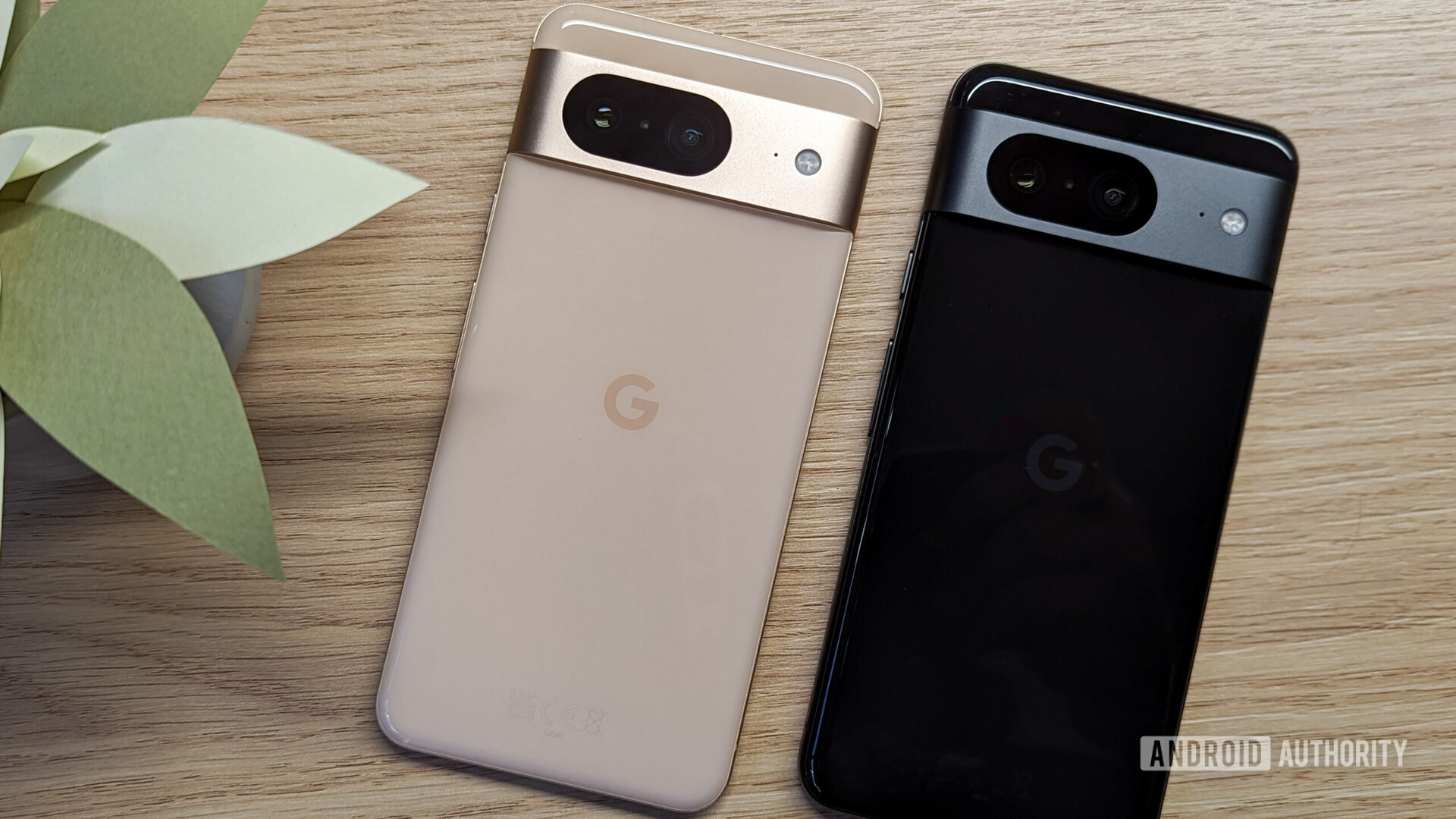
Google has usually maintained two different size tiers, and the company has continued the trend with the Pixel 8 and Pixel 8 Pro. The Pixel 8 is the smaller phone, with dimensions of 150.5 x 70.8 x 8.9mm and a weight of 187g. If you prefer smaller phones, the Pixel 8, with its 6.2-inch display-diagonal, is the phone to get.
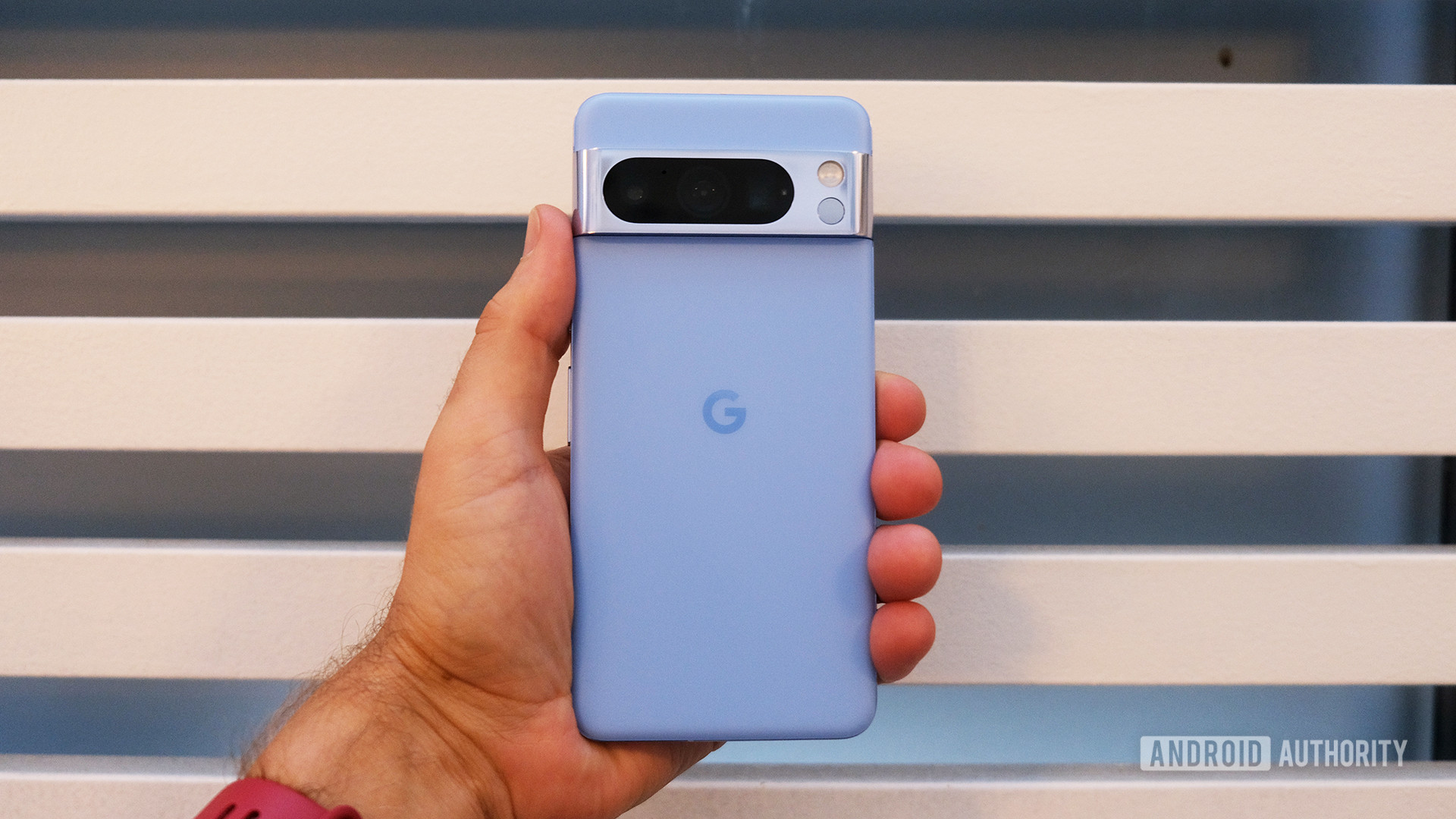
The Pixel 8 Pro is fairly larger in length and breadth and almost the same in thickness. The phone’s dimensions are 162.6 x 76.5 x 8.8mm, while it weighs 213g. The display diagonal on the Pixel 8 Pro is a healthy 6.7-inch, so you get more screen real estate with the bigger size.
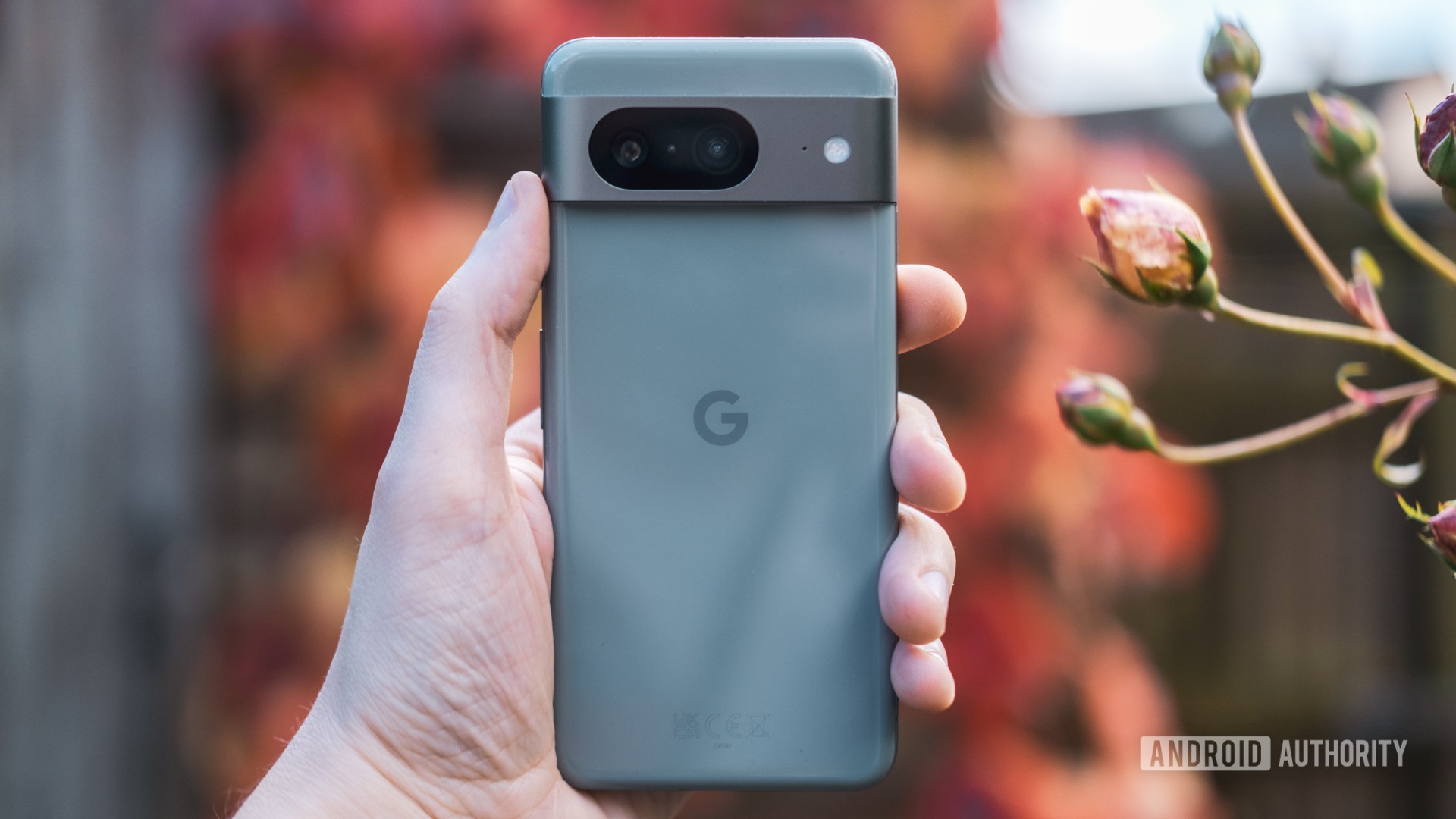
Beyond the size, the Pixel 8 and Pixel 8 Pro follow a familiar design. The Pixel 8 has a glossy look on the back, while the Pixel 8 Pro has a matte effect. You can make out the Pixel 8 Pro from the Pixel 8 by spotting the third rear camera in the camera visor.
Google Pixel 8 vs Pixel 8 Pro: Camera
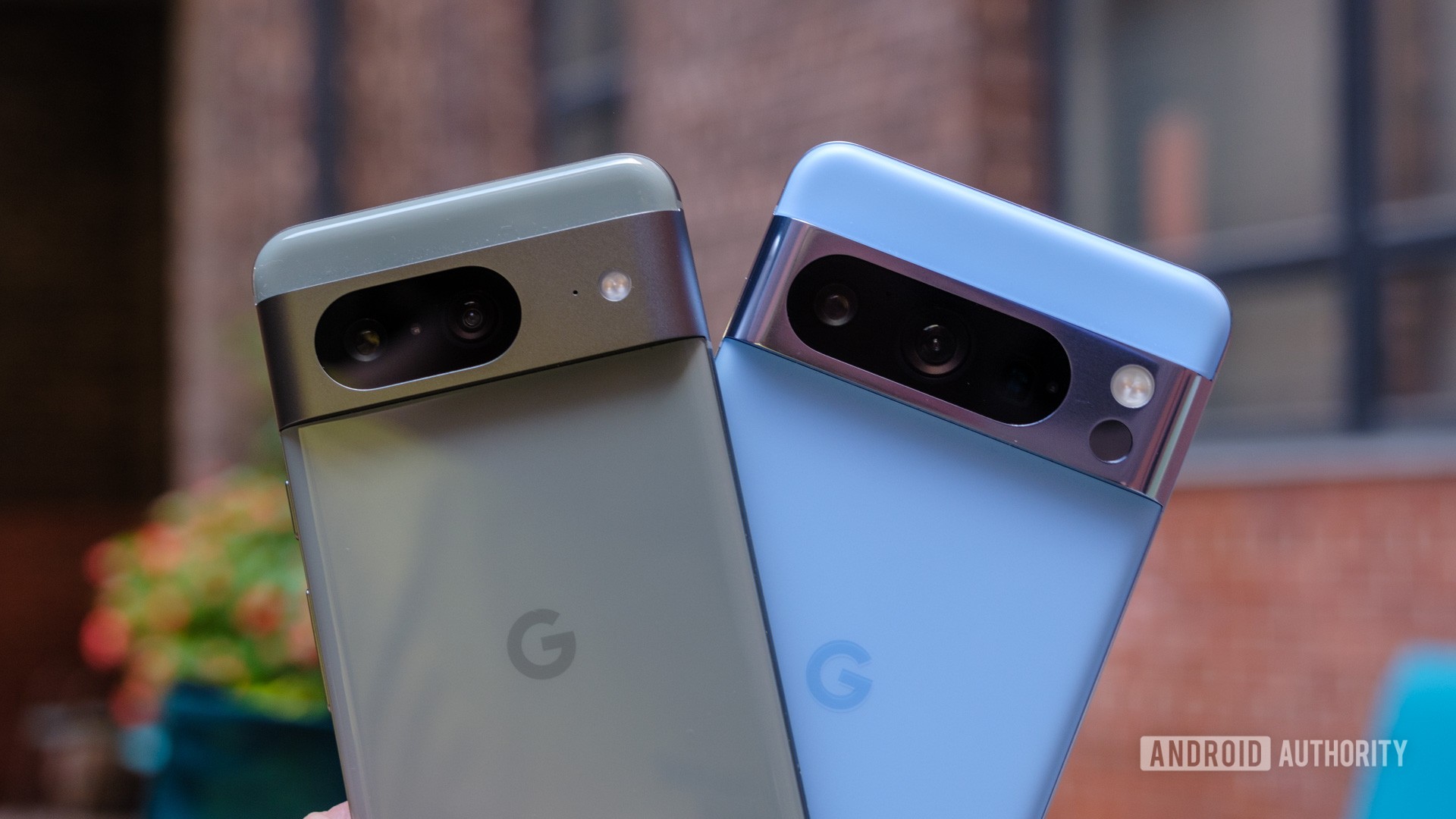
The secondary cameras are the big point of divergence between the two phones. Both camera phones have the same primary rear shooter and front camera; the ultrawide angle rear camera is different, while the Pro has an extra telephoto sensor that the regular Pixel 8 lacks.
The primary camera is the same on both the Pixels and that is the camera that most people will use most of the time.
Starting with the primary rear camera, both phones have a 50MP camera with an f/1.68 aperture and OIS. Pixel cameras have usually been excellent despite modest hardware, and we have no doubts about these phones being capable shooters.
Google Pixel 8 primary camera samples
Google Pixel 8 Pro primary camera samples
For the ultrawide camera, the Pixel 8 gets a 12MP camera with an f/2.2 aperture and a 125.8-degree FoV. The Pixel 8 Pro, on the other hand, gets a 48MP ultrawide camera with an f/1.95 aperture and a 125.5 degree FoV. Both phones get autofocus on the ultrawide camera, which enables macro mode capabilities.
Google Pixel 8 ultrawide camera samples
Google Pixel 8 Pro ultrawide camera samples
The Pixel 8 Pro also has a 48MP telephoto camera with an f/2.8 aperture and OIS, enabling 5x optical zoom. The Pixel 8 entirely misses out on a telephoto sensor, though Google tries to make up for it with Super Res Zoom of up to 8x. Super Res Zoom works better on the Pixel 8 Pro as it has the telephoto sensor helping it out for up to 30x digital zoom.
Google Pixel 8 Pro telephoto camera samples
The selfie camera on both phones is a 10.5MP shooter with an f/2.2 aperture. The only difference is that the Pixel 8’s front camera is fixed focus, while the Pixel 8 Pro’s front camera supports autofocus.
Google Pixel 8 selfie camera samples
Google Pixel 8 selfie camera samples
Another difference between the two phones is that the Pixel 8 Pro supports Pro controls. This makes it the first Pixel smartphone to come with manual camera controls. Alongside this, you can also output high-resolution images. These features are missing from the Pixel 8 and other Pixel smartphones.
The Pixel 8 Pro is the first Pixel phone to get Pro controls.
The Pixel 8 Pro has also received Video Boost and Night Sight Video functionality with an update. Currently, the Pixel 8 is not on track to receive these features.
Obviously, the cameras that are similar on both phones are more or less at par with each other. The Pixel 8 Pro’s telephoto lens makes it the winner, as you get a lot more versatility that you would otherwise be missing out on the regular Pixel 8. Features like Video Boost are also pretty good and give a definite edge to the Pixel 8 Pro. The Pixel 8 is still a very utilitarian camera, it’s just that the Pixel 8 Pro is better rounded.
Google Pixel 8 vs Pixel 8 Pro: Battery life and charging
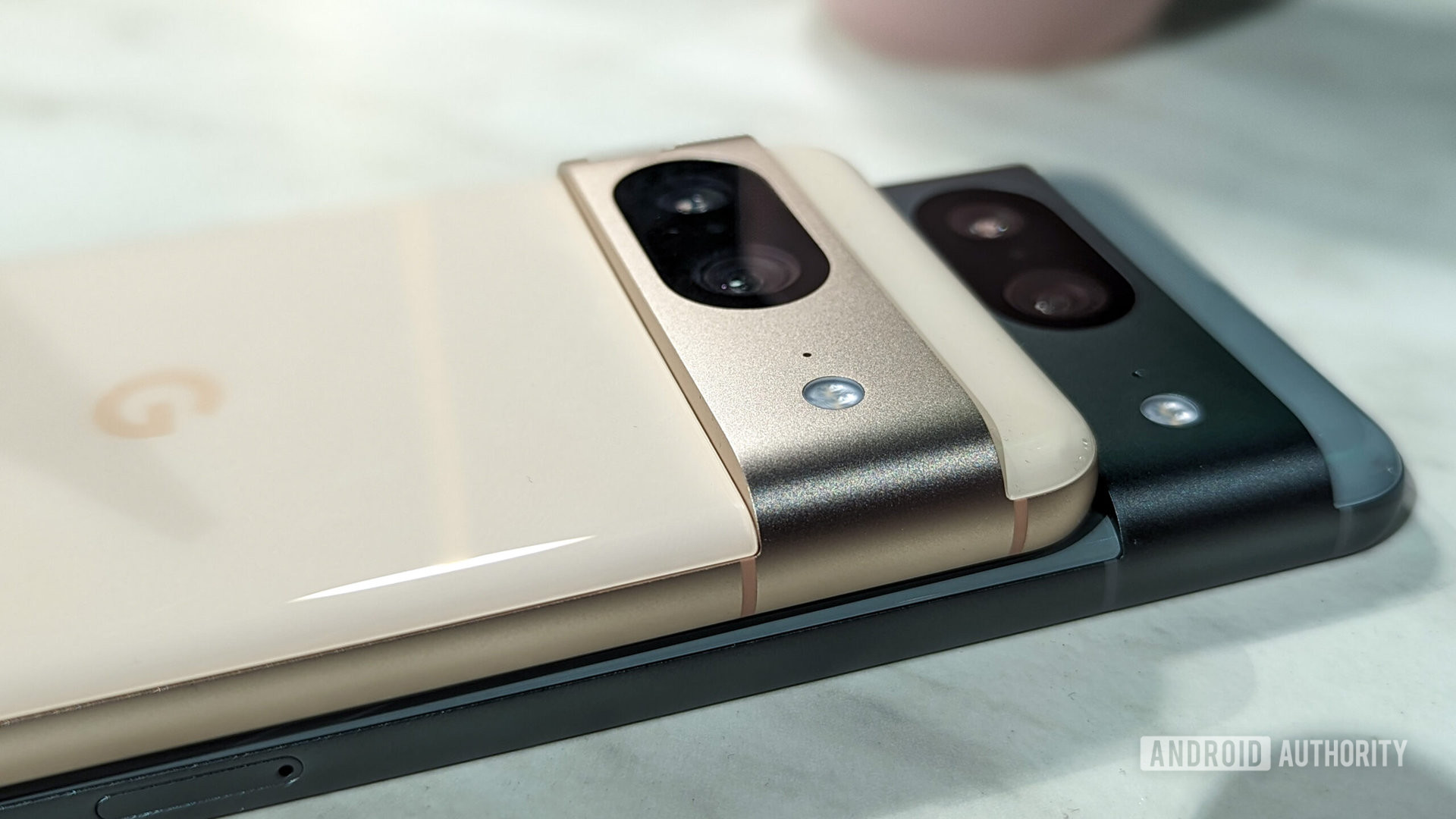
Because the phones are of different sizes, they naturally have different battery capacities. The Pixel 8 has a 4,575mAh battery, while the larger Pixel 8 Pro has a 5,050mAh battery. The Pixel 8 is able to last through a day, while the Pixel 8 Pro can push it a bit further and last for a day and a half.
The fast charging capabilities on the devices are also slightly different. The Pixel 8 supports 27W wired fast charging through the USB-PD 3.0 PPS protocol, while the Pixel 8 Pro takes it up to 30W wired fast charging. The Pixel 8 takes about 77 minutes for a full charge, while the Pixel 8 Pro takes about 80 minutes.
Both phones support Qi wireless charging. The Pixel 8 can accept up to 18W wirelessly on the Google Pixel Stand (2nd gen), while the Pixel 8 Pro can accept up to 23W wirelessly on the same wireless charger. If you don’t have the Pixel Stand (2nd gen), your wireless charging speeds on both phones will be limited to 12W. Both phones also support reverse wireless charging for your Qi-certified accessories.
Google Pixel 8 vs Pixel 8 Pro: Price and availability
- Google Pixel 8 (8GB/128GB): $699
- Google Pixel 8 (8GB + 256GB): $759
- Google Pixel 8 Pro (12GB/128GB): $999
- Google Pixel 8 Pro (12GB/256GB): $1,059
- Google Pixel 8 Pro (12GB/512GB): $1,179
- Google Pixel 8 Pro (12GB/1TB): $1,399
The Pixel 8 has a lower price structure than the Pixel 8 Pro, which puts the differences in hardware into perspective. The Pixel 8 starts at $699 for the 128GB variant and $759 for the 256GB variant. Pre-orders for the device got a Pixel Buds Pro for free.


On the other hand, the Pixel 8 Pro costs $999 for the 128GB variant, $1,059 for the 256GB, $1,179 for the 512GB, and $1,399 for the 1TB storage variant. Pre-orders for the device got a Pixel Watch 2 for free.


Both phones were available to pre-order from October 4, 2023, with open sales beginning on October 12, 2023. You can easily purchase both devices these days. Google has run some time-limited discounts, especially on the Pixel 8, discounting it for as much as $100. You can often also spot Google offering a free case for the devices.
Google Pixel 8 vs Pixel 8 Pro: Which should you buy?
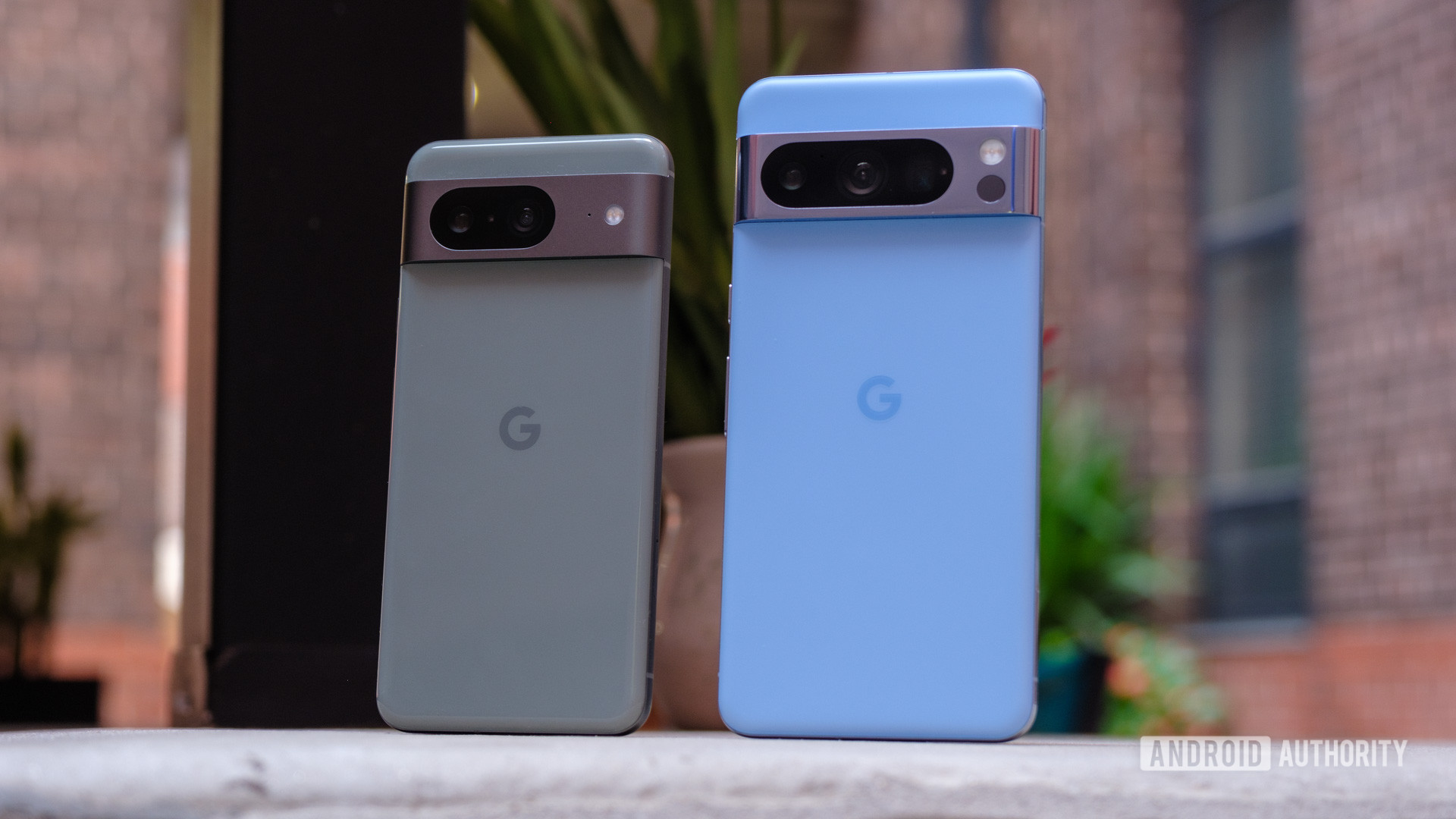
It’s clear that Google is targeting different tiers of consumers with the specs and pricing of the Pixel 8 vs Pixel 8 Pro.
The lower $699 price tag of the Pixel 8 makes it the de-facto recommendation for most users. It has a smaller and more manageable size, an equally competent primary camera, the same software experience, and a well-rounded spec sheet. If you aren’t chasing any particular spec on the Pixel 8 Pro, you should default to the Pixel 8 as it will be a great smartphone for most people. If you are simply looking for a good flagship Pixel phone that offers a great experience, the Pixel 8 is the phone to get.
If you are simply looking for a good flagship Pixel phone that offers a great experience, the Pixel 8 is the phone to get.
The Pixel 8 Pro is for the enthusiast. While it is not a complete spec-chaser that we often see from other OEMs (no Pixel has been a spec-beast, for that matter), it packs enough of a punch to stand its ground. For users who demand a larger screen, finer camera controls, greater camera flexibility, or simply more storage, the Pixel 8 Pro makes sense.
Which do you think is the better phone?
But you also have to spend at least $300 more on these features, which might be too steep for consumers looking for a robust value package. Some extras like the temperature sensor and UWB functionality won’t add nearly enough value to be part of your purchase decision.

Fun, exclusive Android 14 customizations
Industry-leading update promise
Google Pixel 8 vs Pixel 8 Pro: FAQ
No, neither the Pixel 8 nor the Pixel 8 Pro have an SD card slot.
Yes, both the phones are IP68 water and dust resistant. They are not completely waterproof, though, but can survive submersion 1.5m deep in fresh water for up to 30 minutes.
No, the Google Pixel 8 Pro does not have a curved screen. Google has equipped the Pixel 8 Pro with a flat display this time.
Yes, the Pixel 8 and Pixel 8 Pro have Qi wireless charging up to 12W with Qi-certified third-party wireless charger. With the first-party Pixel Stand (2nd gen), you can wirelessly charge up to 18W on the Pixel 8 and up to 23W on the Pixel 8 Pro.
Yes, the Pixel 8 and Pixel 8 Pro have dual-SIM and eSIM support. Both the phones accept one nano-SIM. With the use of eSIM, you can add a second SIM.
Gemini Nano is coming to the Google Pixel 8 Pro, but not the Pixel 8. The latter phone lacks the hardware to support Google’s mobile on-device AI model.